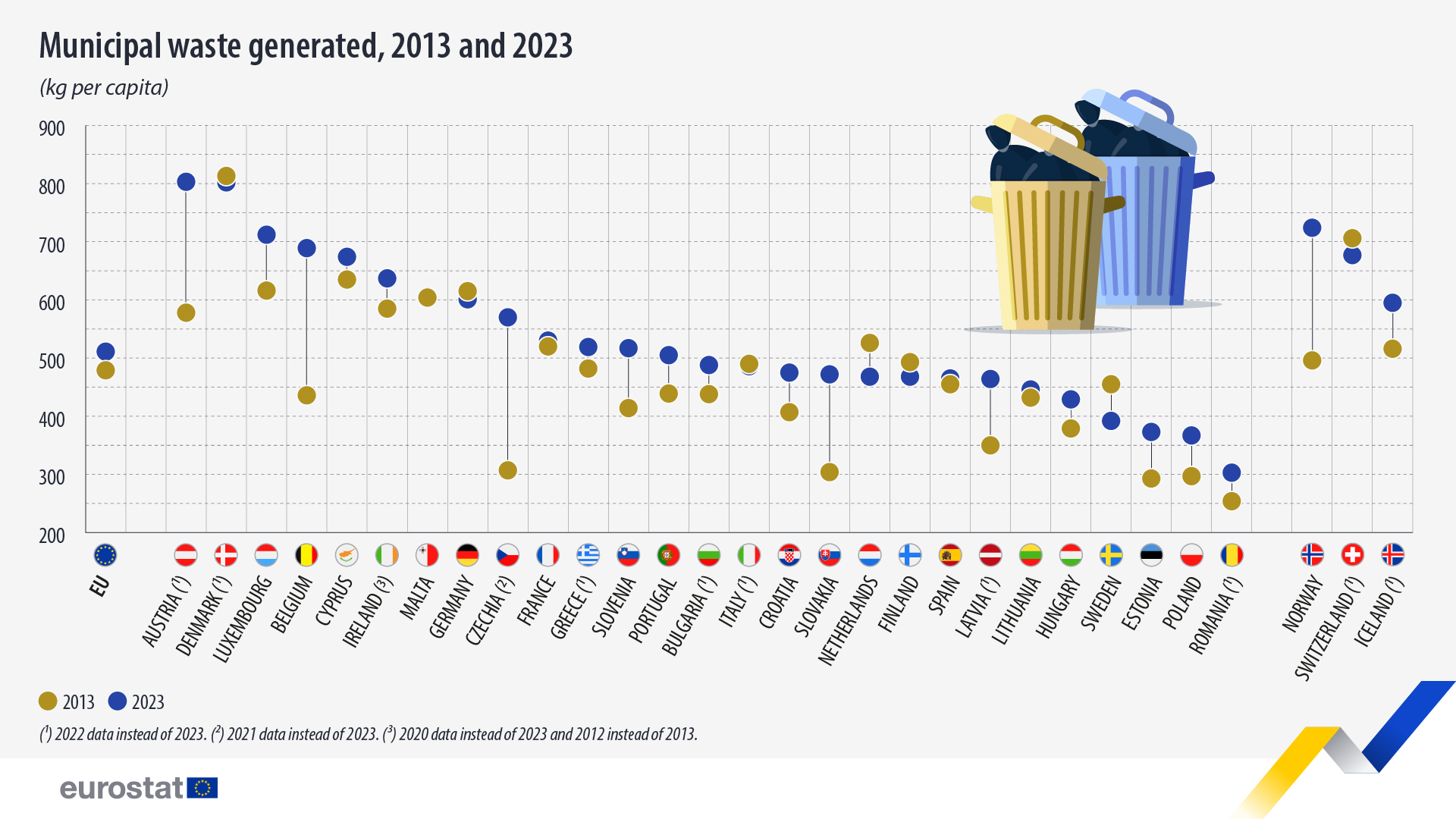Municipal waste down by second consecutive year

In 2023, the amount of municipal waste generated per person in the EU amounted to 511 kg, 4 kg less than in 2022 (515 kg) and 23 kg less than in 2021 (534 kg), which represents a 4.3% drop in the course of 2 years. Compared with 2013, the amount increased by 32 kg.
The available data reveals significant differences across EU countries. People generated the highest amount of municipal waste per person in Austria (803 kg per person, 2022 data), Denmark (802 kg, 2022 data), and Luxembourg (712 kg). The lowest amount of waste per person was generated in Romania (303 kg, 2022 data), Poland (367 kg) and Estonia (373 kg).
Source dataset: env_wasmun
246 kg per person recycled in the EU
The EU recycled an average of 246 kg per person in 2023. This means that 48.0% of the total amount of municipal waste generated was recycled, compared with 37.2% in 2013 (199 kg per person).
In 2023, 129 kg per person was incinerated (25.2% of the total amount of waste generated) and 115 kg per person became landfill (22.5%). In 2013, the amount incinerated per person amounted to 127 kg (26.4%), while 142 kg per person (29.7%) ended up as landfill.
Source dataset: env_wasmun
For more information
- Statistics Explained article on municipal waste
- Thematic section on waste
- Database on waste
- Podcast on waste in the EU
- Statistics for the European Green Deal dashboard
Methodological notes
Municipal waste refers to waste from households as well as other waste that, because of its nature or composition, is similar to waste from households. It does not include all types of waste generated in the country. For example, included are household waste and small commercial waste, while excluded are industrial waste, agricultural waste, medical waste, and construction and demolition waste.
If you have any queries, please visit our contact us page.


